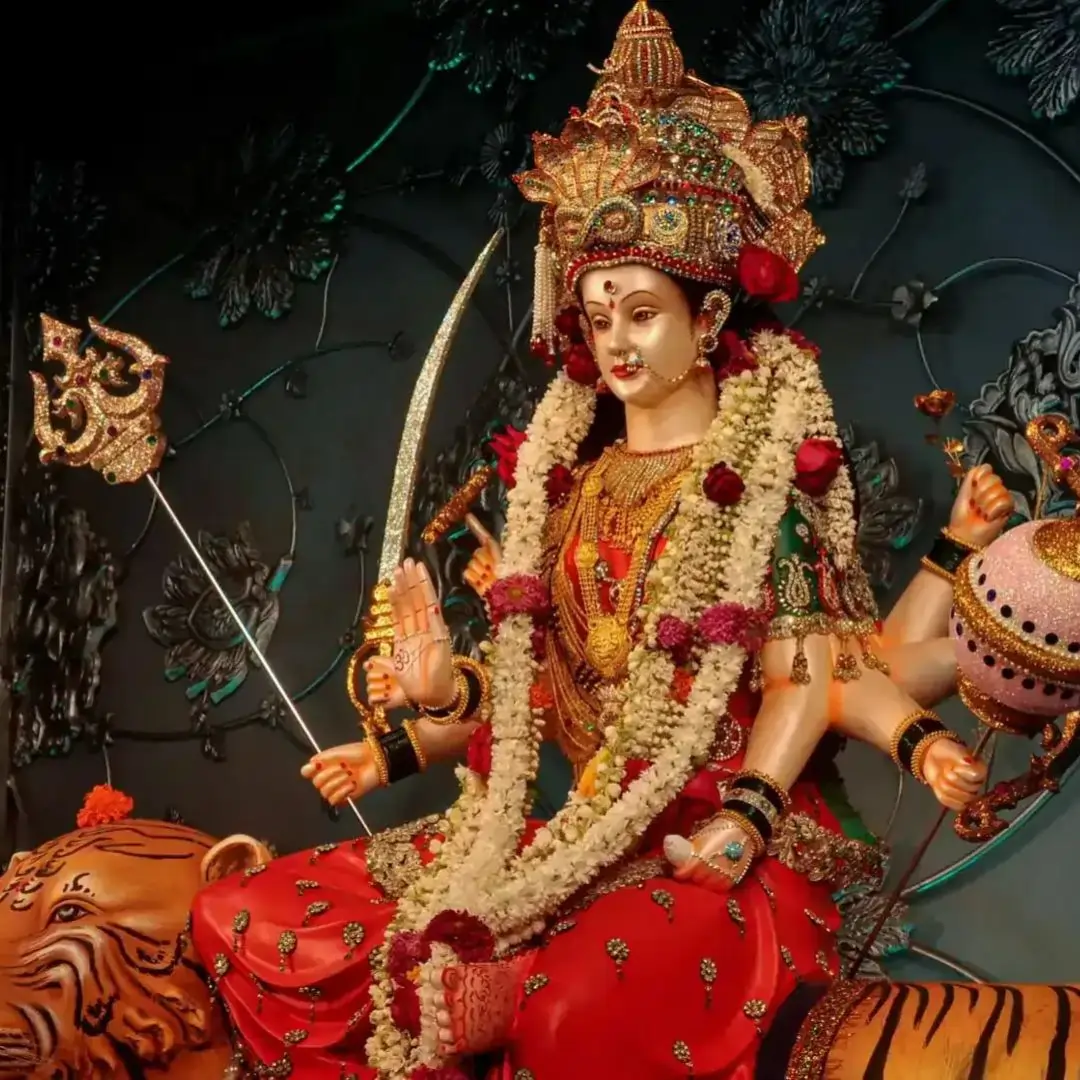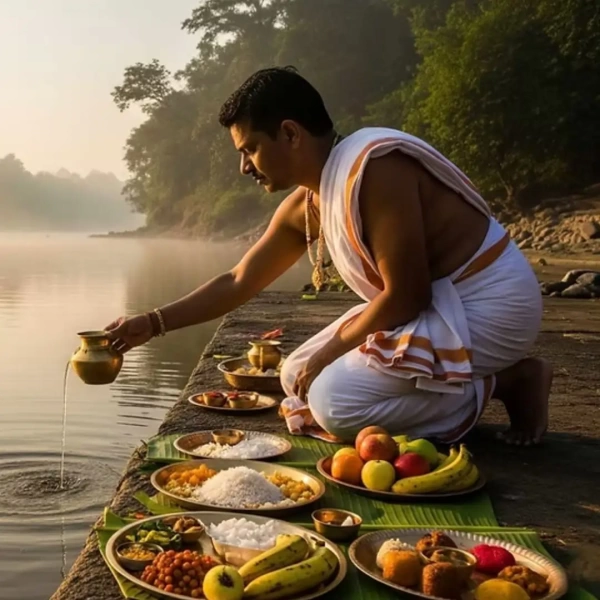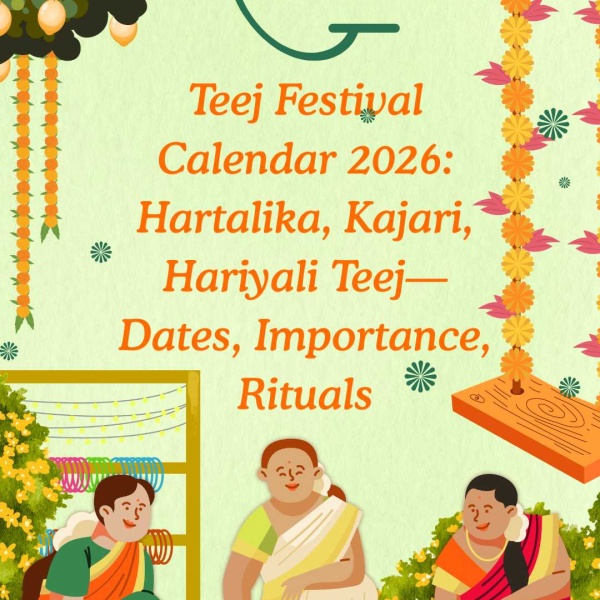
Introduction
Chaitra Navratri, also called Vasant Navratri or Rama Navratri, is a nine-day Hindu festival dedicated to the nine forms of Goddess Durga. Unlike the Sharad Navratri in autumn, Chaitra Navratri is celebrated in spring, marking a time of renewal, energy, and spiritual cleansing.
In 2026, Chaitra Navratri will be observed from Thursday, March 19 to Friday, March 27. The last day also coincides with Ram Navami, which celebrates the birth of Lord Rama.
Mythological & Cultural Significance
- Link to Goddess Durga: According to Hindu scriptures, Goddess Durga fought and defeated the demon Mahishasura, symbolizing the victory of good over evil.
- Connection to Lord Rama: Chaitra Navratri also overlaps with the time when Lord Rama worshipped Goddess Durga before his battle with Ravana.
- Seasonal Change: As spring begins, the festival is seen as a time for new beginnings, both spiritually and physically.
Dates & Timing
- Start Date: Thursday, March 19, 2026
- End Date: Friday, March 27, 2026
- Ram Navami: Friday, March 27, 2026
- Ghatasthapana Muhurat in Delhi: 6:52 AM to 7:43 AM on March 19
(Exact timing may vary by location, so check your local panchang.)
Daily Colours & Goddess Forms
Each day is dedicated to a different form of Goddess Durga, with a specific colour symbolizing that day’s energy.
| Day | Date | Goddess | Colour | Symbolism |
| 1 | Mar 19 | Shailaputri | Yellow | Joy, energy |
| 2 | Mar 20 | Brahmacharini | Green | Growth, harmony |
| 3 | Mar 21 | Chandraghanta | Grey | Strength, balance |
| 4 | Mar 22 | Kushmanda | Orange | Vitality, optimism |
| 5 | Mar 23 | Skandamata | White | Peace, purity |
| 6 | Mar 24 | Katyayani | Red | Courage, passion |
| 7 | Mar 25 | Kalaratri | Royal Blue | Protection, power |
| 8 | Mar 26 | Maha Gauri | Pink | Love, kindness |
| 9 | Mar 27 | Siddhidatri | Purple | Spiritual wisdom |
Wearing these colours during puja is believed to strengthen the connection with that day’s goddess.
Ghatasthapana (Kalash Sthapana) – First Day Ritual
The festival begins with Ghatasthapana, which marks the invocation of Goddess Durga.
You will need:
- An earthen pot with clean soil and seven types of grains.
- Copper or brass kalash (pot).
- Mango leaves, coconut, red cloth, sacred thread (mauli).
- Water, betel nut, rice, and flowers.
Steps:
- Clean the puja area and take a bath early in the morning.
- Place the earthen pot and sow the grains inside.
- Fill the kalash with water, tie the mauli thread, and place mango leaves inside.
- Place the coconut wrapped in red cloth on top of the kalash.
- Decorate with flowers and rice, and chant Durga mantras while inviting the Goddess to reside in your home.
Daily Puja Vidhi
Every day during Navratri, devotees:
- Light a lamp (preferably a ghee diya).
- Offer fresh flowers, incense, and fruits.
- Recite mantras or Durga Saptashati chapters.
- Perform aarti and distribute prasad.
Offerings can be adjusted to the goddess of the day — for example, milk for Maha Gauri, jaggery for Shailaputri, honey for Kushmanda.
Do’s and Don’ts
Do’s:
- Maintain cleanliness in the home and puja area.
- Follow a sattvic (pure vegetarian) diet.
- Chant mantras and meditate daily.
- Perform charity and help those in need.
Don’ts:
- Avoid alcohol, non-vegetarian food, onion, and garlic.
- Do not cut hair or nails during Navratri.
- Avoid anger, gossip, and negative speech.
- Do not leave the kalash unattended or let the diya extinguish.
Kanya Puja (Ashtami/Navami)
On the eighth or ninth day, devotees invite nine young girls (symbolizing the nine forms of Durga) into their homes.
- Their feet are washed.
- They are offered food like puri, chana, and halwa.
- They are given gifts and dakshina.
This ritual honours the feminine divine energy and blesses the household with prosperity.
Want to know more about Festival & Vrata Guides
Fasting-Friendly Recipes
During Chaitra Navratri, people eat only foods allowed for vrat (fast). Common recipes include:
- Sabudana Khichdi – Tapioca pearls cooked with peanuts and mild spices.
- Makhana Kheer – Roasted fox nuts in milk with dry fruits.
- Kuttu Ki Poori – Buckwheat flour puris, served with aloo curry.
- Singhare Ka Halwa – Water chestnut flour halwa.
- Rajgira Kadhi – Amaranth flour kadhi with curd.
- Falahari Bhel – Makhana, peanuts, and fruits tossed with rock salt.
Benefits of Observing Chaitra Navratri
- Spiritual: Purifies the mind and strengthens devotion.
- Physical: The sattvic diet detoxifies the body.
- Mental: Brings focus, discipline, and emotional balance.
- Cultural: Connects families and communities through shared rituals.
Regional Celebrations
- North India: Traditional Durga Sthapana and Ram Navami celebrations.
- Gujarat: Garba and dandiya nights, even in spring.
- Maharashtra: Linked to Gudi Padwa, the Marathi New Year.
- South India: Special pujas in Murugan and Devi temples.
FAQs
Q1: Can pregnant women fast during Navratri?
Yes, but they should follow a mild fast and consult a doctor before starting.
Q2: Can Navratri be observed without fasting?
Yes, devotion and prayer are more important than fasting itself.
Q3: Is Chaitra Navratri less important than Sharad Navratri?
No, both have equal spiritual significance, though Sharad Navratri is more widely celebrated.
Q4: Can non-Hindus participate?
Yes, anyone is welcome to join in the prayers and celebrations.
Online Puja Platforms (Trusted & Official)
If you’re unable to visit a temple during Chaitra Navratri, here are some official and reliable platforms that let you participate in Navratri pujas from home:
- SATVIK e-Puja — A highly trusted and authentic online ritual service. Each puja is performed live via Zoom or Google Meet by verified Vedic pandits, personalized with your name and sankalp. You also receive prasad and a digital puja certificate afterward.
- Utsav App — A widely used devotional app in India. You can offer pujas at major temples across the country, watch live darshan, and receive temple-issued prasad directly at home.
- Hindu Mandir Puja — A trusted spiritual platform connected with well-known temples. It offers live darshan, puja arrangements, and sacred prasad delivery
These platforms ensure that distance never comes between you and your devotion. They provide a seamless and meaningful way to participate in Navratri rituals with complete authenticity and convenience.
Conclusion
Chaitra Navratri 2026, from March 19 to 27, is a sacred opportunity to welcome new beginnings, honour the Divine Mother, and align your life with positive energy. Whether you follow the daily colours, perform Ghatasthapana, prepare vrat recipes, or participate in online pujas, the key is sincerity and devotion.
When observed with faith and discipline, Chaitra Navratri can bring blessings, inner peace, and renewed strength for the months ahead.


